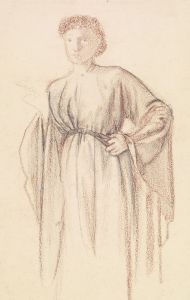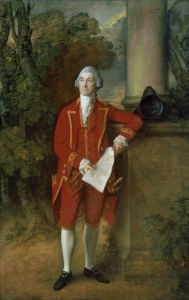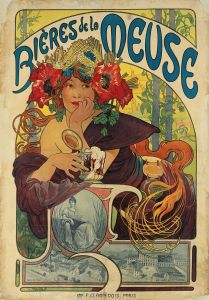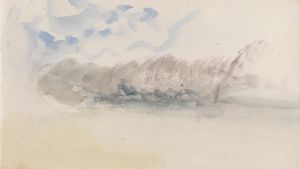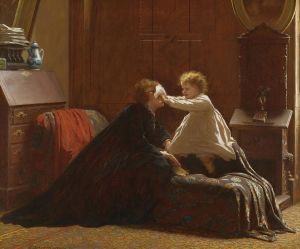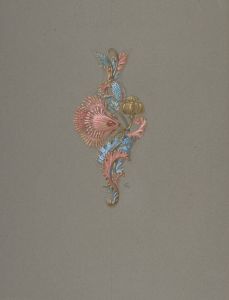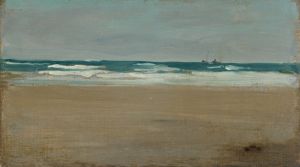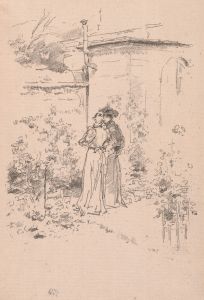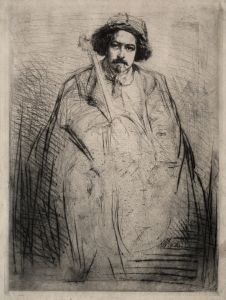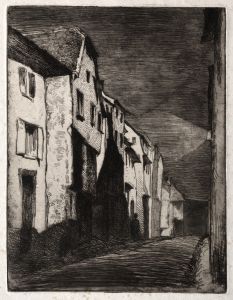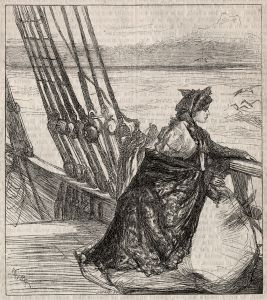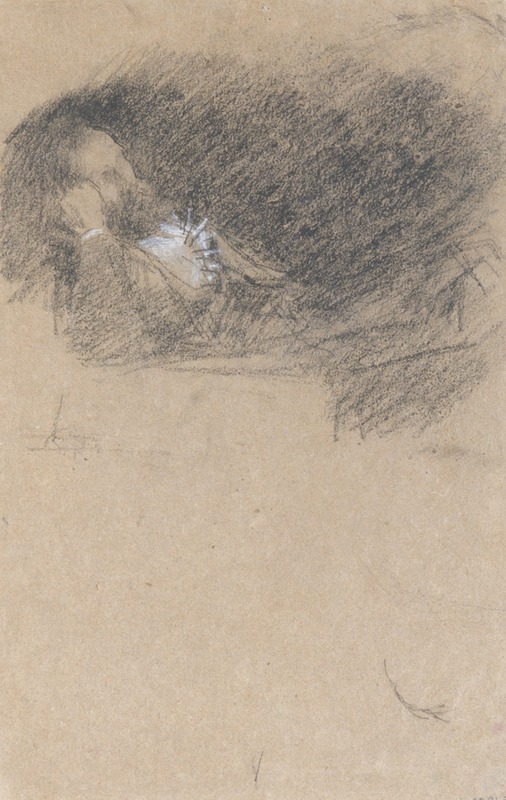
Portrait of Frederick R. Leyland
A hand-painted replica of James Abbott McNeill Whistler’s masterpiece Portrait of Frederick R. Leyland, meticulously crafted by professional artists to capture the true essence of the original. Each piece is created with museum-quality canvas and rare mineral pigments, carefully painted by experienced artists with delicate brushstrokes and rich, layered colors to perfectly recreate the texture of the original artwork. Unlike machine-printed reproductions, this hand-painted version brings the painting to life, infused with the artist’s emotions and skill in every stroke. Whether for personal collection or home decoration, it instantly elevates the artistic atmosphere of any space.
"Portrait of Frederick R. Leyland" is a painting by the American-born, British-based artist James Abbott McNeill Whistler. Completed in 1870, this portrait is a significant example of Whistler's work during a period when he was refining his approach to portraiture and experimenting with the aesthetic principles that would later define his career.
Frederick Richards Leyland, the subject of the portrait, was a prominent English shipowner and art patron. He was known for his discerning taste in art and his support of contemporary artists, including Whistler. Leyland's relationship with Whistler was both professional and personal, as Leyland commissioned several works from Whistler and was a key figure in the artist's social circle.
The portrait captures Leyland in a contemplative pose, seated and gazing to his left. Whistler's use of a subdued color palette and his focus on the sitter's expression and posture are characteristic of his style during this period. The painting reflects Whistler's interest in the harmony of color and form, a principle he often referred to as "art for art's sake." This approach emphasized the aesthetic experience of the artwork over its narrative content.
Whistler's technique in this portrait demonstrates his skill in capturing the personality and presence of his sitter with minimalistic detail. The background is understated, drawing attention to Leyland himself. The artist's use of light and shadow adds depth to the composition, highlighting Leyland's features and the texture of his clothing.
The relationship between Whistler and Leyland, however, was not without its tensions. Their most famous conflict arose over the decoration of Leyland's dining room, which Whistler transformed into the "Peacock Room," a masterpiece of interior design. The project led to a falling out between the two men, primarily over financial disagreements and artistic differences. Despite this, the "Portrait of Frederick R. Leyland" remains a testament to their earlier collaboration and mutual respect.
This painting is part of the collection at the Freer Gallery of Art, which is part of the Smithsonian Institution in Washington, D.C. The gallery houses a significant number of Whistler's works, thanks to the bequest of Charles Lang Freer, an American industrialist and art collector who was a great admirer of Whistler's work.
"Portrait of Frederick R. Leyland" is an important piece within Whistler's oeuvre, illustrating his transition towards a more refined and subtle approach to portraiture. It also serves as a historical document, providing insight into the life and character of Frederick Leyland, as well as the complex dynamics between artist and patron during the late 19th century. The painting continues to be studied and appreciated for its artistic merit and its role in the broader narrative of Whistler's career and the art world of his time.





